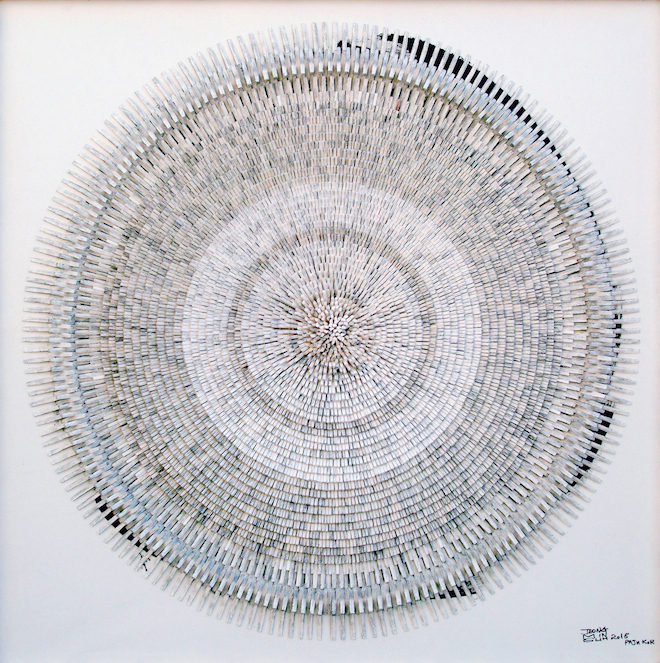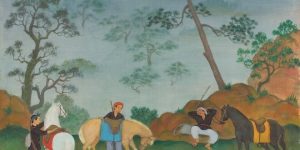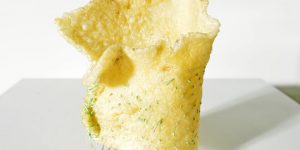Exhibitions in Singapore: Review of Opera Gallery’s ‘Shadow of a Pine Tree’
Featuring three Korean contemporary artists, including Suh Jeong Min and Bahk Seong Ghi, the exhibition sparks dialogue on the intermingling of tradition and modernity in Korean art

Bahk Seon-ghi, ‘An Aggregate’, 2011
Looking broadly at Korean contemporary art, two distinct groups emerge, one technological, the other traditional. These distinctions refer not so much to aesthetics but the choice of material and technique. Artists like Choe U-Ram, Lee Bul, Haegue Yang, and video artist duo Moon Kyungwon and Jeon Joonho come to mind in the first category, where the use of software and electronics, amongst other digital technologies, create works that evoke futurism and science fiction. Falling under the traditional are artists like Chun Kwang-young, Yeesookyung, and Kang Ik-joong, who employ traditional materials or motifs like Korean hanji paper and Korean ceramics but reconfigure their uses and meanings in contemporary ways.
The artists presented in Opera Gallery’s exhibition, ‘Shadow of a Pine Tree’, from February 24 to March 12, belong to the latter group. Born in the 1960s, artists Lee Gil Rae, Bahk Seon-ghi and Suh Jeong Min share a heightened sensitivity toward material and construction, as evidenced by the intricate, labour-intensive nature of their works.
Soldered from steel and copper piping, the pine tree sculptures by Lee Gil Rae (b. 1961) juxtapose nature and man. The dissonance between their quiet elegance and symbolism—in Korean tradition, pine trees represent longevity and honour—and the hard metal express Lee’s views on the inevitability of nature’s erosion by industrialisation. However, just as the pine tree remains upright even in harsh weather, it is a also symbol of unbending virtue. The austere beauty of Lee’s sculptures thus also harbour a sense of hope, of nature defiant.
In contrast to the stately presence of Lee’s sculptures, the works of Bahk Seon-ghi (b. 1966) are a study in lightness and balance. Bahk suspends small pieces of wood, steel and charcoal on nylon thread to create levitated sculptures depicting objects in nature or everyday life. They are masterful expressions of the fleetingness of nature, life and beauty, and are liminal objects between presence and absence that demand close, contemplative looking.

Suh Jeong Min, ‘Mandala’, 2015
While abstract, the elaborate paper works of Suh Jeong Min (b. 1962) manifest a deep respect toward the natural. Suh’s painstaking technique of rolling mulberry hanji paper and using those rolls to make a composite whole conflates painting and sculpture. His time-consuming treatment of hanji allows the handmade paper to express its versatility, in turn also making the overall work alive with texture.
Collectively, the three artists affirm the respect for craft and natural materials in Korean contemporary art. ‘Shadow of a Pine Tree’ is an apt title for an exhibition that suitably demonstrated the continued relevance and inspiration of the traditional in the contemporary.
This article is written by Rachel Ng and was originally published in Art Republik 14.









